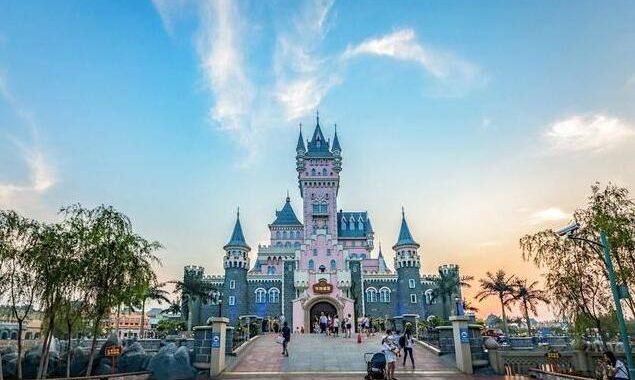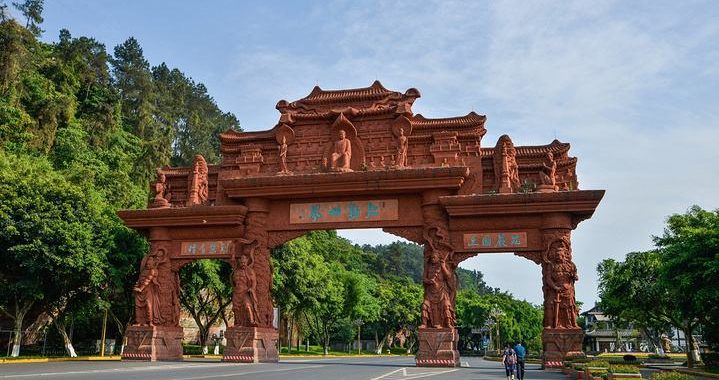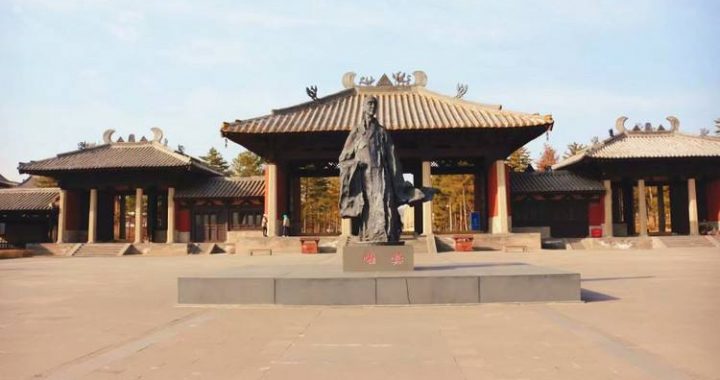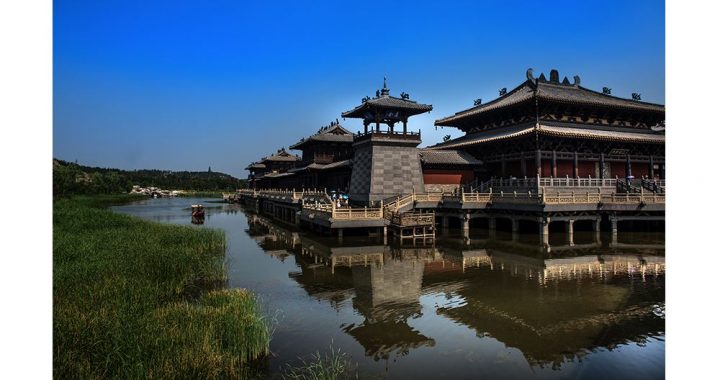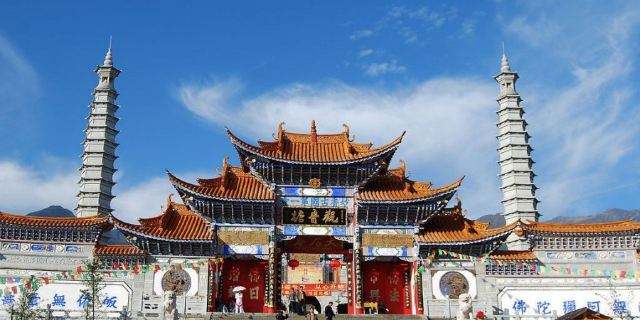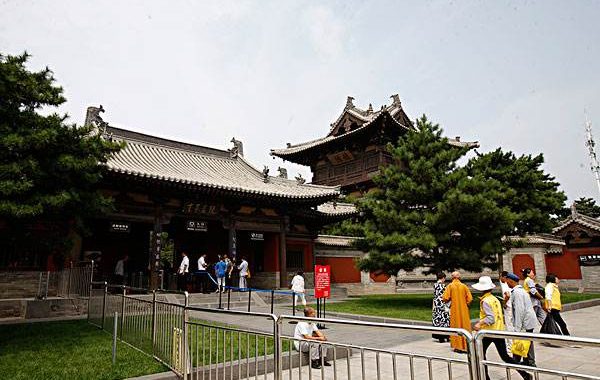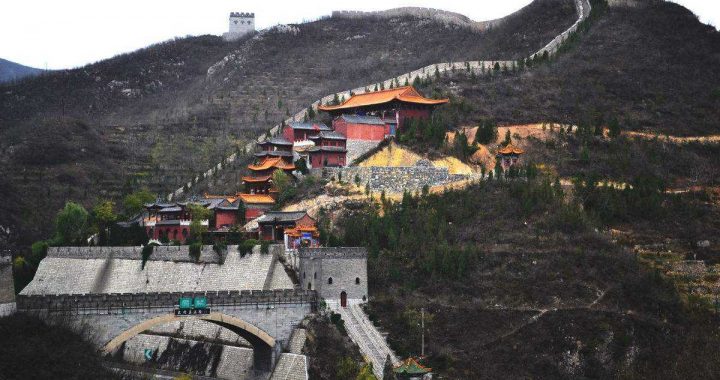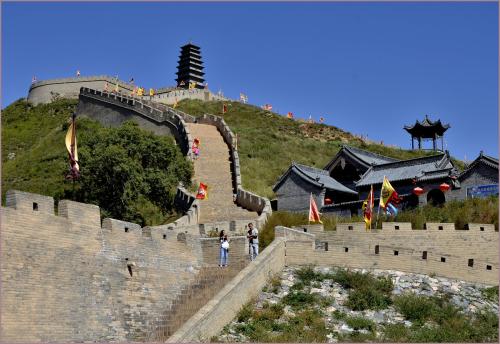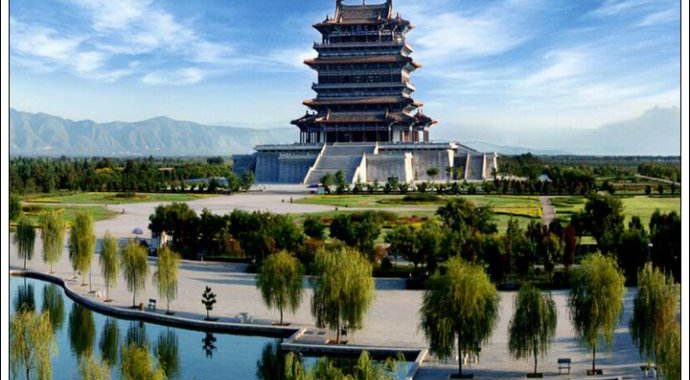Impregnable Fortresses
15 min readA capital is the center of civilization for a nation and a country, it is a physical national fortress and a symbol of the nation’s spiritual strength. All ambitious Chinese dynasties invariably regarded the people as the basis of long term stability.
Qin Shi Huang, after he unified China, set up a system of prefectures and counties. Pingcheng was designated a county under Yanmen Commandery. The Northern Wei gradually expanded Pingcheng into a capital on the former site of the Qin and Han Dynasties. In 398AD, Tuoba Gui moved the capital of the Northern Wei from Shengle to Pingcheng and developed the city based on the models of Yecheng, Luoyang and Chang’ an. First,6,000 people were employed in the construction of the capital, and later over 100,000 people migrated here. From 398 AD to 481 AD, there were overa dozen migrations of more than 10,000 people-a total of over 1.5 million people.

The capital grew more and more splendid and magnificent. History teaches us that high population density in a specific period of time is usually a sign of the prosperity of a society. The population of the Northern Wei state in the early years of the 6th century was twice that of the Western Jin in the Taikang Era.
The construction of the Northern Wei cities, especially the creation of Pingcheng block-style residential areas, was completed by Tuoba Tao, Emperor Shizuof Northern Wei, grandson of Tuoba Gui. He made the capital a city of great prosperity and vibrancy.
Raising pigs, sheep, cattle and horses in the capital was a unique custom of Pingcheng, entirely different from other Chinese inland cities. The Northern Wei even set up departments to administer separate social systems for nomads and Han Chinese-another unique feature of Pingcheng.

The Northern Wei capital Pingcheng was divided into three sections according tohistorical records and archaeological findings-palace, city area and outer city.
The palace was in the north at the highest point in the city; the city area and outer city were built around the palace to the south. The outer city was divided into 16 large blocks with 9 crossings by way of three streets. The 12 gates open onthe four cardinal directions. The city features rigorous design and orderly layout.
The famous ancient Chinese blockblock-style residential area was first used here.
A fast-flowing river lies to the west, and on one side of the river lies the Jiaotian Temple. Opposite the temple is a stone cave temple-today known as the Yungang Grottoes. To the west of the temple is a royal garden complete with rare birds and animals. This is called Xiyuan Garden, and it was built by Emperor Taizong of Northern Wei.
In the east is the Baideng Temple, an imposing ancestral temple complex. By the temple is Dongyuan built by Emperor Taizu of Northern Wei. To the south of Baideng Hill is a large open area which was used as a training ground for Northern Wei soldiers.
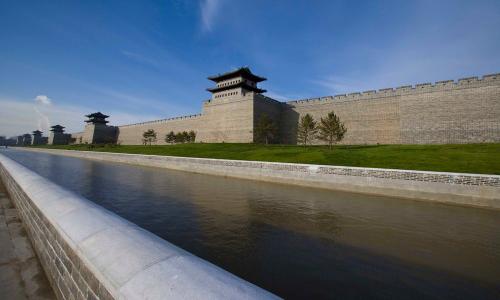
To the north is Beiyuan, one of the holy lands of the Northern Wei royal family.
It was a place they would go to worship the Buddha. Deer were seen as auspicious by the Northern Wei nobles, because of their ancestral culture. Therefore, they raised a large herd of deer in Beiyuan.
A temple called Siyuan Temple was built on Yongguling, adjacent to Beiyuan, accompanied by cypresses and clouds. Empress Feng and her grandson Emperor Gaozu of Northern Wei invited foreign guests to boat on the lake, and together they would compose poems and sing songs.
In the south were located a hall,a temple, three-tiered stone Buddha figures, and a large garden of medicinal herbs. Rivers were diverted from the north and west of the city into the city.

The hall, called the Hall of Enlightened Rule, had a round roof and a square body, symbolizing that man is an integral part of nature. Ancient monarchs discussed politics in the Hall of Enlightened Rule. Important royal events were always held in the ha11. In the Pingcheng era of the Northern Wei, Emperor Gaozu summoned Hua Mulan who had won great glory in battle to the hall to reward her. Later, he carried out divinations in the hall which called for moving the capital to Luoyang in Henan Province and declared his decision there.
When Pingcheng(Datong) was the capital of the Northern Wei, Datong was characterized by plentiful water resources and natural vegetation, with the Sanggan River, Wuchuan River, Yuhe River, Yinma River, and Wanquan River flowing through the town. In the Qing Dynasty(1644-1911), men of letters often boated on the rivers, drinking wine and singing song, and writing poems.
The Yuhe River was a fast-flowing river until the 1950s. The water depth of the bridge opening was 4.3 m, and the flow velocity was 4.0 m/s. However, the river gradually dried up, together with a lake called Wenying Lake the east. Most of the rivers and lakes, once so sparkling and vibrant, in the Datong Area became exhausted.

Rivers, which enriched our lives and inspired our imaginations, are leaving us, one by one. Days without rivers are boring and insipid. They provide such beautiful curves and spiritual inspiration in life.
Water is to the earth like blood vessels are to human. Arbitrary construction and short-sighted mining projects have hurt the earth severely. The gold, silver, copper and iron unearthed from the earth are tantamount to stripping the red and white blood cells from the human body.
Crown Prince Hassan of Jordan called for a re-definition of poverty:”It should”he said “be based on living conditions rather than material wealth.”I believe such a definition is still nowhere near enough. The extent of the earth’s resources are decreasing and this damage is the final conclusion of poverty. Theglobalization discussion is important, but treating the relationship between the people and the earth in an appropriate manner is far more than important. Economic crisis and ecological crisis, fundamentally, is a cultural crisis.

Joseph Needham famously speculated about why the industrial revolution did not appear in China with its state-of-the-art ancient civilization, but rather in the West with its relatively underdeveloped civilization? The answer I believe is that China was not willing to build its happiness or its survival on inflicting damage on nature just in order to have an industrial revolution. The industrial revolution born in Western values has caused tremendous damage to nature. But China, pursuing a harmony between man and nature, has been always caring for nature.
Water scarcity and pollution, like the sword of Damocles, is threatening human life. In Africa today, how many young children die because of water shortages every year? Various chemical pollutants keep poisoning the earth. The disappearance of Loulan is sad, but what is even more horrible is that the whole human race is sliding into the vicious circle of Loulan. When rivers become mere legends, how long will it take the human race to heed the warning of their death dirge?

The Tang Dynasty, by taking the Northern Wei capital as their base, strengtheneditself militarily. They developed Pingcheng into a garrison town. It was renamed Yunzhou City, which followed the pattern of the Northern Wei.
The Liao Dynasty built “watchtowers”with a diameter of 10 km on the former site of Yunzhou City in the Tang Dynasty. The four ordinal city gates were named Yingchun, Chaoyang, Dingxi and Gongji. The Jin Dynasty followed this example, and they opened three new gates, namely Fengtian, Xuanren and Fucheng.
In the Ming Dynasty(1368-1644), General Xu Da developed the old town of the Tang, Liao, Jin and Yuan Dynasties by shaping the original rectangular city into a square of 3.28 square km. He adjusted the edge of the city to the south of the walls. Troops and civilians, even local officials participated in the construction and renovation of the government offices, shops and residences.
Xu Da(1332-1385), founding military commander of the Ming Dynasty, was a great authority on military tactics and operations, and he had a great talent for building military defenses. Beijing during the Ming Dynasty was conceived by Xu Da. Xu Da has some connections with Datong. His daughter became a concubine of Prince Dai in Datong. Xu Da applied the construction methods he had used in Beijing in Datong.

Datong’s city walls were built layer by layer using rammed stones. The gray bricks for the walls weighed about 18 kg. The walls, about 14 meters high and 16 meters wide at the broadest point, included 62 majestic gatehouses, turrets andwatchtowers. And in the center of the walls in each direction was a gatehouse.
On the corners of the walls stood four turrets. The octagonal tower in the northwest, called Qianlou, was also known as the Turret of the Town because of its height. People often climbed up on the tower to sample the spectacular views.
In the spring of 1507, Li Zhi, the Ming Dynasty thinker, historian and writer, wrote a poem called Evening View on Qianlou during a visit he made from Quanzhou in Fujian in South China to his friend Mei Guozhen, governor of Datong.
Because of the poem, Datong was compared favorably with the Qiufeng Tower, the Pavilion of Prince Teng and Yueyang Tower. The Qiufeng Tower is famous because of Han Emperor Wu’s Ode to the Autumn Wind.
The Pavilion of Prince Teng and the Yueyang Tower, both very famous buildings in China, gained great fame because of Wang Bo’s Preface to the Pavilion of Prince Teng and Fan Zhongyan’s Dedication on Yueyang Tower.
Hongzilou, east of Qianlou, can be called the home of preeminent watchtowers because of their delicate structure and shape. Watchtowers, uncommon on ancient Chinese walls, are precious historical relics.
The square town of Datong with the still-standing Wenfeng Pagoda is like an inkstone with a writing brush inserted. The pagoda is like an inkstone with a writing brush inserted. The pagoda, completed under the reign of Emperor Xizonga of the Ming Dynasty, is an octagonal seven-tier pagoda about 14 meters in height. On each stele on the lower part of the pagoda are engraved.

After the reconstruction of Datong town, Xu Da ordered the construction of a wooden Chinese Torii with four fronts facing four directions at the intersection of four streets in the city center. The ingeniously structured archway with its beautiful shape is known among the people as Four Chinese Toriis Building. Each of the four streets has a building at the middle crossing which connects to one of the four city gates. Outside each gate is a barbican. By the barbicans are gates, on which embrasured watchtowers were constructed.
Datong city is characterized by a number of things. First, the outer contour, unlike the normal straight line shape, is a gear-shaped curve arranged in an orderly manner. Second, Yanta Tower, commonly known as the Watchtower, is located in the east of the south wall. This is rare in Chinese city walls. Third, the city walls offer a wonderful panoramic view of Datong. Four main streets divide the city area into four districts and each district is in turn divided into four sections, with each section divided into a number of blocks. Fourth, the south, east and north walls all have self-contained quadrilateral urban areas, each with its own barbican.
The towns are connected to the main town through hanging bridges, which protect thecore area even if an enemy were to break through the small towns on the periphery.
Fifth,a ditch, also called a moat, is dug outside the walls of the city. In thesummer or the fall, the moat filled with reflections of the surrounding green environment makes it a must-see for visitors.
Datong city’s exquisite design and unique defensive structures make it a rare garrison in the history of ancient Chinese military buildings.
Yu Qian, statesman, patriotic general and distinguished poet of the Ming Dynasty, made inspection tours of Datong and repeatedly petitioned the court to allocate food and money to provide relief for the people of Datong.
Yu Qian walked on the city walls of Datong and loudly sang a poem called Yunzhong Jishi (Poem at Datong) to praise the charming views at dusk and to celebrate Datong’s great importance in resisting foreign invasion.
Li Zhi sighed when he saw the views from the city walls: it is really an impregnable city.
Due to its military importance, Datong was a city that can only be dominated bya prince. Zhu Yuanzhang, founder of the Ming Dynasty, who rose from lowly peasant stock, bestowed a special honor on his 13th son Zhu Gui when he made him Prince of Dai in charge of Datong.
Zhu Gui was a half-brother to Prince Yan Zhu Di. Along with his favorite concubine who was Xu Da’s daughters, they dominated power on behalf of the emperor. In order to demonstrate his royal grandeur, Zhu Gui built his mansion,a city within a city, called the Mansion of Prince Dai in the northeast of the city, covering an area of 180,000 square meters. Today’s Zhengdian Street, Huangcheng Street and Houzai Gate are the remains of the Mansion of Prince Dai.
The Mansion of Prince Dai was converted from the Imperial College of the Liao and Jin Dynasties. In the eastern area, there was Guangshancang, Wangqin Tower, etc.; in the western area, named Jimen, there was Shejitan (Altar of Land and Grain) on the left and the Altars of Wind, Cloud, Thunder, Rain and Mountains on the right.; in the central district could be found Yumen Gate, Duanli Gate, Chengyun Gate, etc. from south to north. The mansion consists of areas for dealing with administrative issues, food preparation, sacrifices, etc.
The mansion is isolated from the outside by high walls of rammed earthen brick, so local people call it the Imperial City, just like Beijing’s Forbidden City.
The magnificent Nine Dragon Wall which still stands in Datong was the screen wall of the Mansion of Prince Dai. After all, Zhu Gui is not Zhu Di, and Datong is not Beijing. The Imperial City is quite different from the Forbidden City-the dragons in Beijing have five claws, while those in Datong only have four.
In 1649 or the oth year of the reign of Emperor Shizhu in the Qing Dynasty, Aisin Gioro Dorgon massacred all the inhabitants of Datong and even lowered the city walls for about two meters out of spite after capturing the city. An impregnable town built by Xu Da was destroyed in just one day.
A poem, Passing by Datong, composed by Wei Xiangshu, Jinshi of the Qing Dynasty recorded the massacre which took place at Datong. Xue Suoyun,a former official of the Ming Dynasty, wrote a poem imitating the poetic style of Wang Su of the Northern Wei to express his sadness:”A town of one thousand years was wiped out in one day.
Collapsed buildings and rubble were seen everywhere and the Sanggan River flowed with blood.”
Gu Yanwu,a famous thinker, historian and linguist from the late Ming and early Qing, called Dorgon’s massacre the Sadness of the Nation and wrote a regular five-character-verse to record the environment at that time and the mood. He wished he could have saved his people and created peace for the nation.
A stele made in 1656 or the 13th year of the Shunzhi’s reign during the Qing Dynasty housed in the Datong Museum, and known as the Record on the Reconstruction of Datong Town, clearly describes the hardship and misery of the people during Dorgon’s massacre. This leads to a special person: Cao Xueqin’s great grandfather Cao Zhenyan.
Cao Zhenyan and his son Cao Xi were rewarded by the emperor with a quadrangular mansion on Dadong Street in Datong, in which there is a lane called Caojia Lane. As prefect of Datong, Cao Zhenyan, shocked by the scenes of devastation, asked the emperor to spare Datong from all taxes for three years in order to rebuild the city and appease the people. Four years later he was promoted to a position in Zhejiang and became very wealthy.
The Dream of the Red Chamber is a book reflecting changes in a prominent family from prosperity to decline. Zhen Shiyin,a character in the book, talks something about these aforementioned historical facts. The name of Jiao Da in Cao Xueqin’s book means good luck to Datong. Readers can find many Datong dialect features in the Dream of the Red Chamber. Even Grandmother Jia servant’s name seems to be taken from a Datong dialect word used to praise girls.
Chapter 79 of the Dream of the Red Chamber says:”Jia She had promised Yingchunto a family named Sun from Datong Prefecture, one of whose ancestors,a military officer, had been taken as a pupil by the Jias. Thus both families could be considered long standing friends.”Yingchun’s husband is named Sun Shaozu. His ancestor Sun Youguang had worked side by side with the Caos for Dorgon when heattacked Datong. When they left Datong, the Caos left the mansion which had been given as a gift by the emperor to the family of Sun. Sun Youguang’s younger brother Sun Sike and Cao Xi served as guards of the Imperial Palace of the Qing Dynastytogether, and Sun Sike’s sister was chosen as Kangxi’s nanny and she married Cao Xi. The Cao Family and the Sun Family became powerful after this intermarriage. As her husband’s family lived at Datong Prefecture, presumably Yingchun must have visited there several times.
Datong is where the Caos became successful in life, and it is also a holy land of Buddhism. The rich Buddhist culture in the Dream of the Red Chamber makes it a literary Buddhist book. Because the word Xiangping (present-day Liaoyang City in Liaoning Province) is engraved before the name Cao Zhenyan in the stele, the issueof where Cao Xueqin was born has been decided. By now the dust has settled on the family roots of Cao Xueqin.
In the 8th year of the Shunzhi Reign (1651), the ancient city gradually recovered and houses and shops were built on both sides of the streets.
In 1900 or the 26th year of the reign of Emperor Guangxu, the Eight-Nation Alliance captured Beijing. Empress Dowager Cixi, dressed like a country peasant woman, was forced to flee the palace to Datong on August 30.A1l the Datong officials knelt as one on the shores of the Yuhe River outside the east gate to welcome her.
Cixi and Emperor Guangxu got out of the chaise and changed to an official litter. When she saw the garrison town towering on the northern border, Cixi who had had her heart in her mouth for the whole trip was finally relieved. When a wooden pavilion came into view, with the eye-catching words -Tower of Peace, Cixi took a deep breath, and blurted out: Peace, finally I found my peace!
In July 1934 or the 23rd year of the Republic of China,a team including the writer and literary historian Zheng Zhenduo, the writer and poet Bing Xin (Xie Wanying), the sociologist Lei Jieqiong, and others left Beijing for Suiyuan (now Hohhot) via Datong on an inspection tour. At that time the Shanxi cavalry commander Zhao Chengshou and the Suiyuan governor Fu Zuoyi hosted a dinner in Datong and Hohhot respectively for them.
This cultural tour to Datong and Suiyuan has become a legendary story in China’s modern history of the humanities. This group of cultural elites had authored a number of precious poems, diaries and expedition reports about Datong. Their soulful words resound and echo even today: Datong has enough to see to warrant an eight to ten day trip. At the end of journey, we were reluctant to leave the city.
There are a number of places of interest with high historical content and artistic value such as Huayan Temple, Shanhua Temple and Fahua Temple and it is rare in China that such sites are preserved completely.
“But now I remember the night, the storm, and I wonder how many blossoms were destroyed.”Many valuable sites have been reduced to rubble by industrialcivilization. They are the material symbols of our five thousand years of civilization and they are the evidence of our survival and show us how life was lived in the past.
One early spring in the 21St century,a campaign of restoration and protection was launched in the ancient city. It is a great forward-looking project to renovate this once-great ancient capital! With the Yuhe River as the boundary, an ancient capital has been recreated to the west and a new town is being built to the east.
The Yungang Grottoes, Huayan Temple, Shanhua Temple, etc. have all been renovated. Villages once scattered before the Yungang Grottoes have been relocated.
The Yungang Grottoes, Huayan Square, Fahua Temple, the ancient city walls of the Ming Dynasty, turrets, watchtowers, barbicans, moats and broken quadrangles have all been restored to their original appearances and they have begun to attract new visitors.
